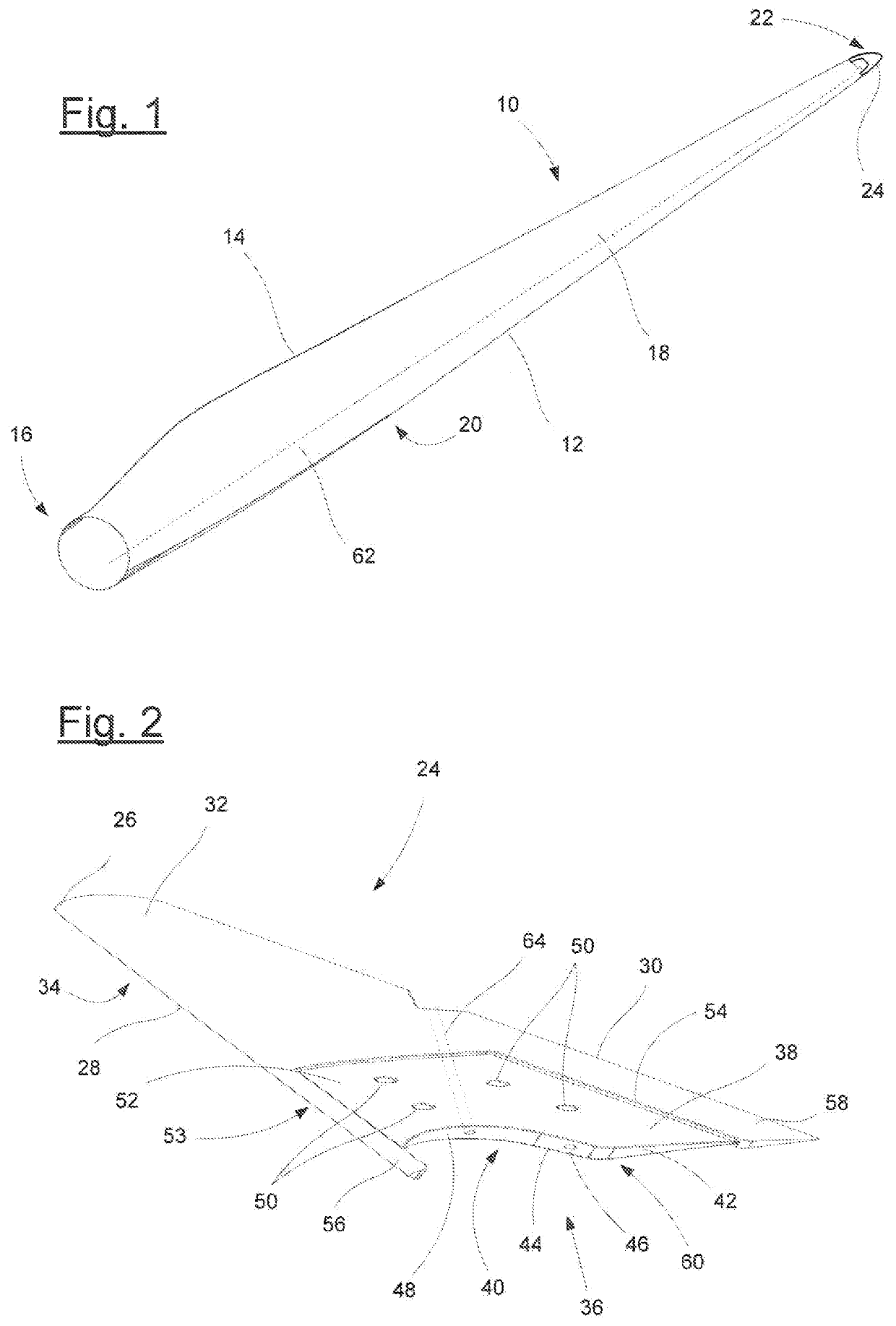Lightning receptor for a wind turbine rotor blade
a technology of lightening receptor and wind turbine, which is applied in the direction of motors, wind energy generation, climate sustainability, etc., can solve the problems of irreparable damage to the rotor blade repeatedly and again, and the wind turbine is particularly affected, so as to prevent the damage to the rotor blade during lightning strikes, the effect of simple manufacture and mounting
- Summary
- Abstract
- Description
- Claims
- Application Information
AI Technical Summary
Benefits of technology
Problems solved by technology
Method used
Image
Examples
Embodiment Construction
[0032]The wind turbine rotor blade 10 of FIG. 1 has a profile nose edge 12, a profile end edge 14, a blade root 16, a suction side 18 and a pressure side 20. The blade tip 22 is formed by a lightning receptor 24 to which there is connected a lightning conductor 62 extending in the interior of the wind turbine rotor blade 10 as far as the blade root 16.
[0033]Details of the lightning receptor 24 can be seen more clearly in FIG. 2. The lightning receptor 24 shown there is produced in one part in a casting process, in the example from aluminum. It has a receptor tip 26, a receptor nose edge 28, a receptor end edge 30, a receptor suction side 32 and a receptor pressure side 34, which faces away from the observer in FIG. 2. It can be seen that the lightning receptor 24 has an aerodynamic profile in cross section.
[0034]At the end facing the observer and remote from the receptor tip 26, the lightning receptor 24 has a fastening portion 36 which has two mutually opposite adhesive bonding sur...
PUM
 Login to View More
Login to View More Abstract
Description
Claims
Application Information
 Login to View More
Login to View More - R&D
- Intellectual Property
- Life Sciences
- Materials
- Tech Scout
- Unparalleled Data Quality
- Higher Quality Content
- 60% Fewer Hallucinations
Browse by: Latest US Patents, China's latest patents, Technical Efficacy Thesaurus, Application Domain, Technology Topic, Popular Technical Reports.
© 2025 PatSnap. All rights reserved.Legal|Privacy policy|Modern Slavery Act Transparency Statement|Sitemap|About US| Contact US: help@patsnap.com

